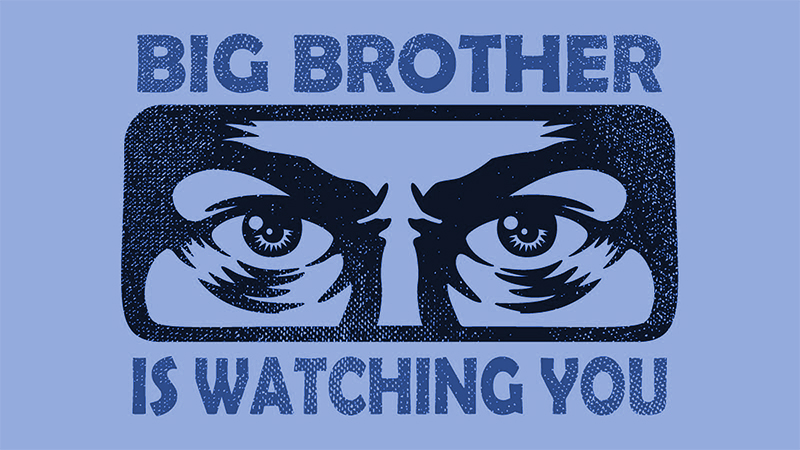Why sometimes we all need a good Big Brother
by: WAYNE STREET technical Manager 1000 words (6 minutes)

An unplanned fire alarm goes off during that difficult time between lessons, there are students everywhere. The majority of them are not in a classroom and it isn’t immediately clear which teachers are responsible for which students. If there is obvious evidence of a fire you might also be dealing with a panicking students looking for friends, trying to see what’s going on, taking photos and making calls. Chaos, but what if you could know exactly where zone by zone, your students are and open a specific route to get them out safely?
I recently visited a new PropTech organisation based at One Canada Square in London. On the face of it Unifi.Id specialise in producing unique solutions to ID problems using ID cards and software. The cards themselves use a proprietary UHF technology and this ties into a larger access control system, typically using PVC cards to unlock doors like you’d see in hotel rooms, or maybe for your IT suite. The normal visual security features, such as a photo and any important information printed on the ID cards but the clever thing is these cards never need to leave you students’ pockets.
For those out of the loop, UHF is ULTRA HIGH FREQUENCY, which sounds cooler than it is. It’s normally used for things like vehicle readers (automatic gates that unlock and open as you approach).
Manual registration becomes a thing of the past.
The student enters the classroom and the system logs that they are there, what time they got there and the route they took to the room. They don’t need to touch a card to a reader or swipe anything, as the software picks them up automatically. Following on from this, installing an integrated access control system allows classroom doors to be locked but, as a student or staff member approaches, those same doors could be unlocked automatically. One step further and cameras using facial recognition and these clever UHF cards can pick out people who aren’t supposed to be there, identifying anomalies in a crowded room. Their system has been developed to trigger alerts on exceptions, and report on the details needed to have the insights on all students attendance at the click of a button.
This feels like the stuff of the future but all of this is a very real prospect and something that Unifi.Id are already doing now. There are some obvious downsides. Multiple potential safeguarding issues which would need to be addressed and there is a point where this all becomes very “Big Brother is watching you”. There are some serious benefits though, no manual registration might be enough to convince some education institutes but where this really comes into its own is in an emergency situation.

During my visit to their office, Unifi.Id showed me an example of an evacuation at a university. Not the easiest of things at the best of times, older students bring a whole host of additional issues and keeping track of students when attendance for many, is no longer mandatory is a nightmare in itself.
The UHF cards and sensors make this substantially easier:
Firstly, signing in is automatic. As long as they are carrying a card, they are logged into the system as they enter the building and pass one of the UHF sensors. When combined with access controlled entry they simply won’t be able to get into the building without a card (this is one area that would need to be addressed differently with younger students). So you now know exactly who is in your building, when the fire alarm goes off.
As usual, students ask “is this a drill?” and valuable time is lost as they grab coats, even though they’ve been asked not to. Later than you would like, the staff and students start heading for an exit. While “evacuating” they pass a sensor on the way out. So a fire register was being automatically taken. More importantly this data is being sent to a “cloud” server and displayed in real time on any internet connected device, showing who has left the building and, in theory, if anyone is still inside. The system even enables the insights into where fire marshals are and those with mobility issues. The insight to make the right decisions in that critical situation.
The software also shows you where these missing people are, allowing you to identify which room they are in. This enables first responders to be sent to them directly, cutting down search time. If the situation was to escalate further and this wasn’t just a drill, there is also nothing stopping you from giving cards to Emergency services on the way into the building, to help track them and keep them safe. You could also manually restrict access to certain areas. For instance the main staircase is on fire so we lock all of the entry points to that route and open doors to an alternative route.
Conclusions…
This technology is not only great on the day as the data from the fire drill is saved and can be reviewed later. You can see the route students took to leave the building and it will tell you exactly how long the evacuation took. This sort of data is invaluable and is an excellent resource for figuring out what’s working and what needs to change in your evacuation plan.
The technology goes beyond registration and evacuation. You can track movements through your building, see from reporting tools how the building needs to be managed better and when. Unifi.Id have a fair number of ideas themselves and some of them are a little “hush hush”. Realistically, it’s going to be some time before this sort of system becomes widespread in the UK, but following Grenfell and now with some of the most prestigious buildings in London, as well as some key university deployments this is proving that real-time actionable insights change the way we manage buildings. These systems could have a very positive effect on how people are managed and it’s this sort of thing that really make you feel like we’re living in the future, systems like this should start to give us the confidence we want. Big brothers, they are not all bad
